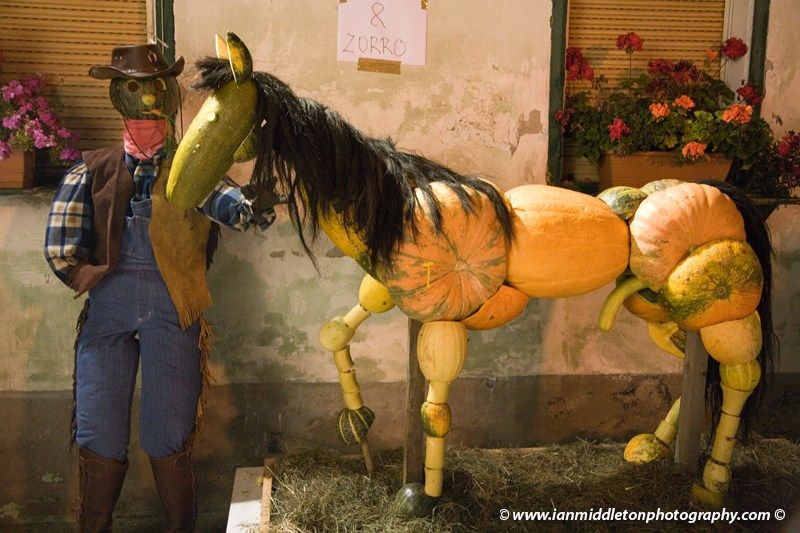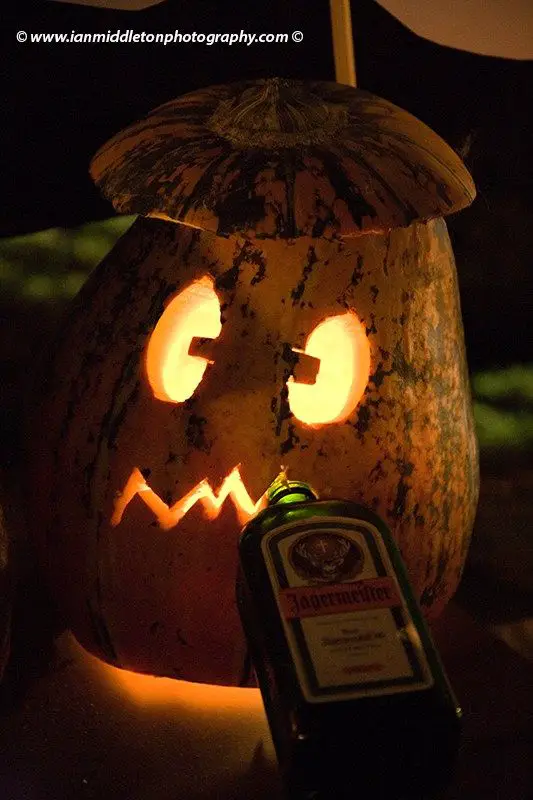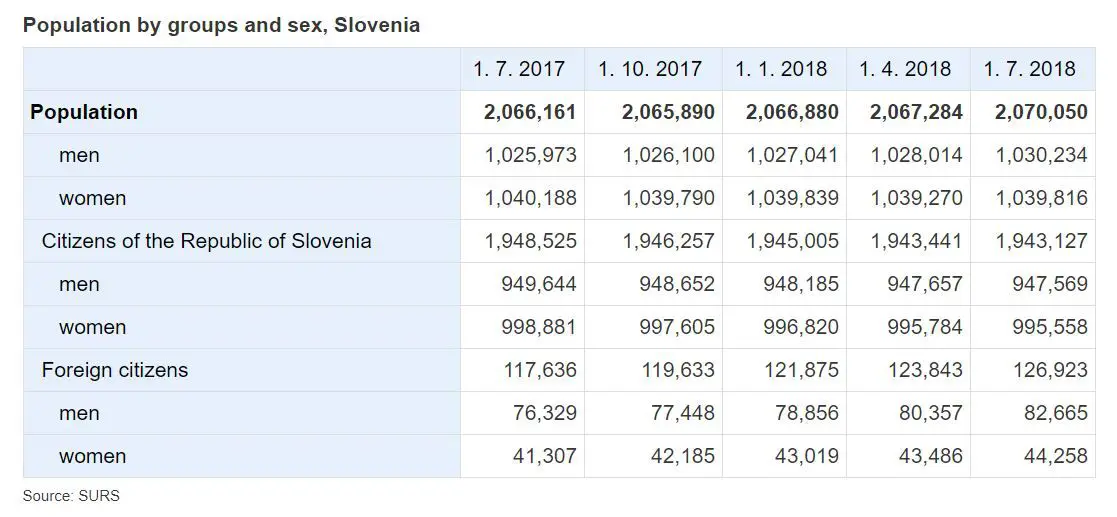News
STA, 28 October 2018 - Winemakers in Slovenia are happy with this year's harvest, which according to official statistics is on course to be the best in Slovenia's history. A total of 128,347 tonnes of grape was picked or 8.2 tonnes a hectare, which is 45% more than last year and up 30% from the ten-year average.
The harvest of red grapes was slightly richer, with 8.6 tonnes picked per hectare until 5 September or 41,295 tonnes in total. Winemakers meanwhile picked 8 tonnes of white grapes per hectare for a total of 87,052 tonnes.
The harvest of late fruit varieties is also expected to be record high this year. The quantity of apples from intensive orchards is expected to be six times higher than last year's (81,193 tonnes) and 43% higher than the ten-year average.
In extensive orchards seven times more apples were produced than last year or 47,586 tonnes.
Pears also grew well, with 4,911 tonnes picked in intensive orchards, which is four times as much as in 2017. The harvest in extensive orchards is expected to be record breaking at 11,000 tonnes or 45.5 kilos per tree, which is 75% above the ten-year average.
The harvest of plums, blueberries and raspberries was similarly rich, exceeding last year's quantities several times.
STA, 30 October 2018 - The new Agriculture Minister Aleksandra Pivec has told the STA Slovenia would not be able to handle and will resist the envisaged 15% cut in the EU rural development funding. The list of her plans meanwhile includes less red tape for farmers, increasing self-sufficiency and more focus on organic farming.
Pivec hopes the cut in rural development funding as part of the EU common agricultural policy for 2021-2027 will end up being less than 10%.
"We absolutely cannot accept the envisaged cut, since it would substantially affect our ability to reach goals," she said.
The minister indicated that Slovenia would find it easier to stomach a greater cut in the direct payment pillar of CAP, where funding would be slashed by 4% in line with the original proposal.
She meanwhile noted that the new financial perspective would leave more room for initiative to member states and she for instance sees this as an opportunity to reduce the administrative burdens for farmers.
"This presents a big problem on the ground. Farmers have a hard time getting to the funds, certain segments are so complicated as to discourage them from applying and the controls are also very demanding," the agriculture, food and forestry minister said.
"Simplifications are being drawn up, the first measures are already being implemented and some results should be felt on the ground as early as December."
The key rural development goals listed by the minister meanwhile also include the preservation of farms, the reduction of risks related to climate change, and addressing demographic and educational issues at farms.
"A dual approach is needed: the young need to be provided with funds to take over the farms, while older farmers also need decent social security to be able to pass on the farms to the young," said Pivec, mentioning the need to fix what are objectively low pensions for farmers.
She feels that the European Social Fund offers a good opportunity to address these issues and to mitigate the effects of the CAP cuts.
Meanwhile, Pivec feels that raising self-sufficiency and responding to climate change will also require technological upgrades at farms, as well as a change in the choice of crops.
"These changes will be painful for some. We have a very tradition-oriented agriculture and to a certain degree it should stay this way, since this is an important aspect in terms of the preservation of the environment, the cultural landscape," she said, but added that there would be no way around certain changes.
Pivec feels that climate change is also one of the reasons for the low self-sufficiency rates for fruits and vegetables, at 21% and 39% respectively last year, with the risks involved being much higher than in livestock farming.
While better protective measures and irrigations systems will be necessary, the minister also sees major opportunities for organic farming.
She pointed out that 85% of Slovenian farms were located in what was termed as less-favoured areas and organic farming could be a solution.
Of the roughly 70,000 farms in the country, 3,635 are presently organic, covering 46,000 hectares. The goal is 5,000 on 50,000 hectares, she said.
Organic farming would also help tackle the low buy-back prices for food products, an issue across the EU, while Pivec also sees a solution in producers working together more closely and thus also achieving more in price negotiations.
Below is a review of the headlines in Slovenian newspapers for Friday, 2 November 2018, as prepared by the STA:
DELO
Security
"Fighting terrorism with less privacy": The Slovenian police have developed an algorithm for systemic checking of airline passengers based on data acquired from airlines. Four out of ten warnings triggered by the system are unwarranted. (front page, 2)
School meals
"Parents should take care of special diets": An increasing number of parents are demanding special diets for their children in schools, which usually are not medicinally warranted and are based on personal or religious beliefs or recommendations from healers. (front page, 2)
Labour rights
"Serial violations in public institutions": Serial violations of labour rights are taking place in the buildings of ministries, agencies and other public institutions, in particular in relation to hiring and payment of cleaners and security guards. (front page, 8)
Yemen crisis
"Tragedy of people in war and poverty": The humanitarian crisis in Yemen brought by the ongoing war is turning into a disaster, with hunger threatening the lives of seven million children. (front page)
DNEVNIK
Weather
"Red alerts due to wind also in Slovenia": Winds reached speeds of up to 100 km/h in certain areas of Slovenia in recent days, leaving wreckage behind. The situation is expected to only get worse with the climate change. (front page, 3)
Papian plagiarism scandal
"Esotericism and politics: Who stands behind the fraud": Numerous questions remain unanswered about the payment of EUR 100,000 by the Education Ministry in 2009-2010 to Armenian healer Ruben Papian for studies that he obviously had not written himself. It is hard to believe that the Education Ministry state secretary, Andreja Barle Lakota, acted on her own.(front page, 2)
FINANCE
European elections
"Who wants to succeed European Commission boss Juncker": As the European elections are nearing, the list of candidates who want to become the new president of the European Commission is getting longer. (front page, 2, 3)
NLB sale
"How often shares soar in their stock exchange debut": The paper analyses what statistics say about the first days when a new share enters stock market, and warns against gambling with the NLB shares, which will be listed in two weeks. (front page, 8, 9)
Local elections
"Which municipalities are the healthiest?": A survey carried out by the paper shows that the healthiest urban municipality in Slovenia is Kranj, while the healthiest municipality overall is Log-Dragomer. (front page, 5)
VEČER
Weather
"Wind worse than water": The worst-case scenario predictions about flooding in northern Slovenia ahead of the holidays on 31 October and 1 November did not materialise, fortunately, but it was the strong winds that did the damage. (front page, 3)
Industry in Pomurje
"They are waiting for holiday allowances and wages": The company Arum, which is all what has remained from the clothing giant Mura, is in trouble. It cannot count on state subsidies this year, and is saving itself by delaying the payout of wages. (front page, 14)
After Merkel
"What Europe will be like without Merkel": Even the biggest critics of German Chancellor Angela Merkel, who has announces she would step down in 2021, are happy that she will try to stay at the post until the planned date. Merkel believes that her negotiating power will not be diminished by the announcement. (front page, 7)
STA, 1 November 2018 - There were a total of 2,070,050 residents in Slovenia at the beginning of July 2018, which is 3,170 more than at the beginning of January, but the number of Slovenian citizens living in the country was down, while the number of residents with foreign citizenship increased.
The share of foreigners in the total population was up to 6.1%, with their number standing at 126,923, the Statistics Office has reported.
In the first half of the year, the number of Slovenian citizens living in Slovenia was down by almost 1,900, while the number of foreign citizens was up by more than 5,000.
At the beginning of July, there were 1,030,234 men and 1,039,816 women living in Slovenia. The share of women, which has been very slowly decreasing for a number of years, was 51.2%.
The share of women among the foreign citizens living in Slovenia was 34.9%. The share was up by 1.8 percentage points in the last four years.
Related: The places where foreigners live in Slovenia and where they come from
STA, 1 November 2018 - A 50-year-old German kayaker died in the River Učja in north-western Slovenia on Wednesday afternoon after his kayak was sucked into a strong whirlpool and he drowned.
The accident happened in the village of Žaga, near the confluence of the Učja with the Soča, as the German was descending down the swollen river together with a 44-year-old friend in another kayak.
The younger kayaker was also sucked into the whirlpool but was able to swim out of it, the Nova Gorica Police Administration reported on Thursday. Paramedics from the nearby Tolmin were not successful in reviving him either.
According to the police, both Germans have been active kayakers for more than 30 years and used appropriate equipment for the kayak trip.
STA, 31 October - The Protestant Reformation was like a breath of fresh air to the stifling social and religious atmosphere in Slovenian lands. It is credited with giving Slovenians the first books in Slovenian, thus encouraging a sense of national identity.
STA, 31 October 2018 - Up until a few years ago, most Slovenians considered Halloween to be nothing but a holiday imported by those looking to make a buck off gory costumes. But recently, it has become quite popular. Although trick or treating is not an established tradition in Slovenia, a number of grizzly events in dark medieval castles more than make up for it.
Slovenians may have it even better than Northern Americans: apart from Halloween parties taking places in authentic ancient castles, many of which have their own very real and sinister witch inquisition stories, Slovenians also get the day off, as the country observes Reformation Day on 31 October.
While Halloween parties for children will be held already in the morning, the really terrifying get-togethers will attract witches, warlocks, vampires and zombies to a number of meeting places across the country in the evening.
Witches will take over Bled Castle, one of the most prominent tourist landmarks, in the evening, while Bogenšperk Castle, some 20 kilometres east of Ljubljana, will become a bewitched market place

©Ian Middleton. See more of this Halloween photos here.
Olimje, a town with a castle said to be a thousand years old, will host a Witches' Conference. Focusing on youth potions, the conference agenda will reflect the fact that Olimje has the third oldest pharmacy in Europe and the maker of the most effective potion will be awarded a jar of pickled bats.
The witches and warlocks more interested in physics than good looks will get the chance to go over the newest research looking into ways to make one's broom fly faster.
Many more events will be held all across the country, all of them featuring a number of activities for children, including magic spell contests and pumpkin carving workshops.
Halloween fans from Northern America may envy Slovenians one more thing: the day after Halloween is a bank holiday as well.
While true Halloween fans may use it to sleep off wicked hangovers, most Slovenians will head for the cemeteries, as the country observes All Saints' Day.
While the two holidays stem from the same pagan tradition, they are different in nature, according to sociologist and philosopher Mirt Komelj.

©Ian Middleton. See more of this Halloween photos here
"On the one hand we have this secular holiday that tries to reign in the fear of death and the dead by allowing people to put on scary costumes, and on the other is the day we remember our dead and visit their graves."
Although our society likes to think of itself as modern, global and civilised, the fear of death and dying is very real and requires methods involving the society as a collective to overcome it, said Komelj, underlining that Halloween and All Saints' Day must be studied as related units.
He believes that Halloween is here to stay, although the ways to celebrate it may change in the future.
STA, 30 October - Slovenians use as many as 16 million candles a year to decorate graves, which ranks the country third in the world per capita. However, the tradition of honouring the dead in this way, which is especially prominent around All Saints' Day, could cause an ecological disaster.
Get to Know the 17 Historical Towns of Slovenia
There are many ways to plan a trip around Slovenia and lenses through which to view it, and one way to explore the country is through its historic towns. But how to choose these in a land that’s got so many? One way is by turning to the work of the Association of Historical Towns (and Cities) of Slovenia (Združenje zgodovinskih mest Slovenije), a group that includes 17 mostly medieval towns sited around the country, each of which has its own story to tell, with the full list being Idrija, Jesenice, Kamnik, Koper, Kostanjevica na Krki, Kranj, Metlika, Novo mesto, Piran, Ptuj, Radovljica, Slovenske Konjice, Škofja Loka, Tržič, and Žužemberk.
STA, 30 October 2018 - The night rain and wind have caused problems around Slovenia, but these have for now mostly remained limited to roads blocked by fallen trees, stormwater and minor flooding of some rivers. While the worst was still expected along the Drava river in the afternoon, the latest reports are more optimistic.
The crypto world may have cooled down from the dizzy heights of December 2017, but Slovenia is still making news on the scene, if not for the various developments at BTC City, then for Monday’s announced sale of Bitstamp, the biggest Slovene success in the field to date.






